The Kunsthistorisches Museum in Vienna has one of the greatest collections of tapestries in the world thanks largely to the Imperial collection of the Hapsburg dynasty. Most of the tapestries are kept in careful storage for conservation purposes and are too delicate to be on public display. Now the museum has placed select rare masterpieces of 16th century Belgian tapestry on display in Threads of Power, an exhibition that explores how the elite used the expense, subject matter and sumptuous materials of tapestry as propaganda tools to broadcast their status and wealth. The 14 tapestries will be on display along with preparatory sketches, cartoons, woodcuts, engravings, etchings, oil paintings on canvas, coins and other artworks associated with the tapestries from July 14th through September 20th, 2015.
With the exception of one tapestry made in the early 1700s from a 16th century design (the tapestry makers kept original cartoons and drawings of their most popular pieces for decades, even centuries, so entire series could be reissued upon request), all of the tapestries were manufactured in Brussels during the 16th century. Influenced by Raphael whose cartoons for Pope Leo X in 1515 ushered in the era of prestigious artists drawing for tapestries, top court artists like Barend van Orley and Jan Cornelisz Vermeyen created the designs that were woven into textiles by the greatest Brussels workshops.
Using precious materials like gold and silver thread, silk and wool, weavers took years to make a single wall hanging. Tapestries were far more expensive than paintings, the exclusive province of the most moneyed nobles and royals. The subjects depicted on these large, luxurious canvases matched the size and importance of the medium. Scenes of royal courts, battles, Biblical stories, mythological figures were idealized versions of the grand personages and who commissioned the works to decorate their walls.
And not just their walls, either. The tapestries were used on state occasions, hung on a dais or as a baldachin over the throne. One of the tapestries in the exhibit, An Unsuccessful Turkish Sally from La Goleta, is a 1712-21 reissue of one of 12 tapestries in a series first commissioned in 1546 by Holy Roman Emperor Charles V to celebrate his capture of Tunis from the Ottoman Turks 11 years earlier. The Conquest of Tunis series was designed by Jan Cornelisz Vermeyen and woven by Willem de Pannemaker’s workshop in Brussels. The contract between Charles and Pannemaker stipulates in detail which materials were to be used: 63 colors of silk from Granada, worsted thread from Lyon, seven kinds of gold thread and three of silver provided directly by Charles V. Charles required that Pannemaker employ seven weavers to work on each tapestry all day. It still took them five years to complete the series for a total cost of 26,000 pounds ($1 million today).
The full series traveled with Charles V and was unfurled at every state occasion and religious ceremony. They were draped in the royal receiving rooms of the Brussels palace and in Madrid’s Alcázar palace under Charles V and his son Philip II of Spain. They were so famous and so well-used that they had to be retired for their own preservation less than a century after they were made and replacements ordered from the original cartoons.
But let’s face, this post is really all about the textile porn. The Kunsthistorisches Museum has been kind enough to provide lovely pictures of some of the tapestries on display at the exhibition. I wish the photos of the complete tapestries are larger (it’s rare that even a high res picture of a monumental piece fully satisfies me), but coupled with extreme close-ups of details, you can get a real sense of the glorious materials and exquisite craftsmanship of Low Country Renaissance tapestries.
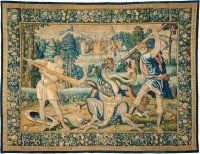
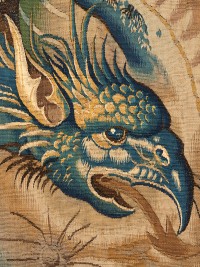
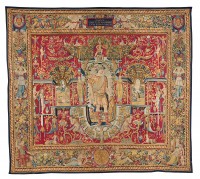
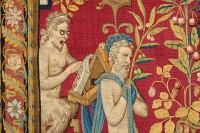
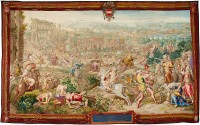
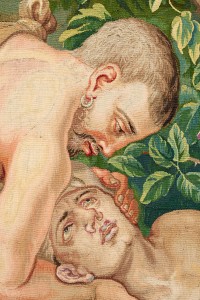
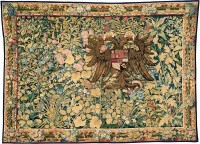
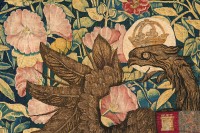
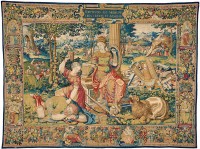
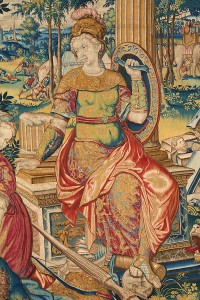
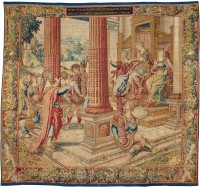
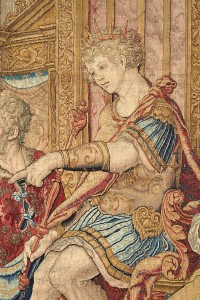
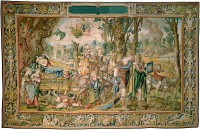
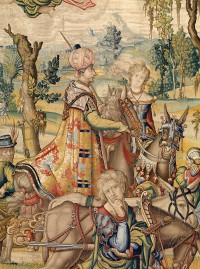
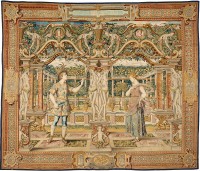
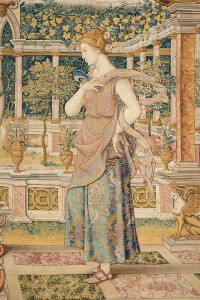
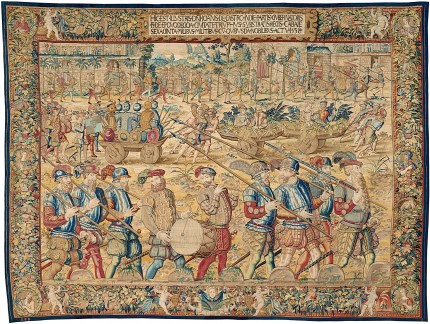
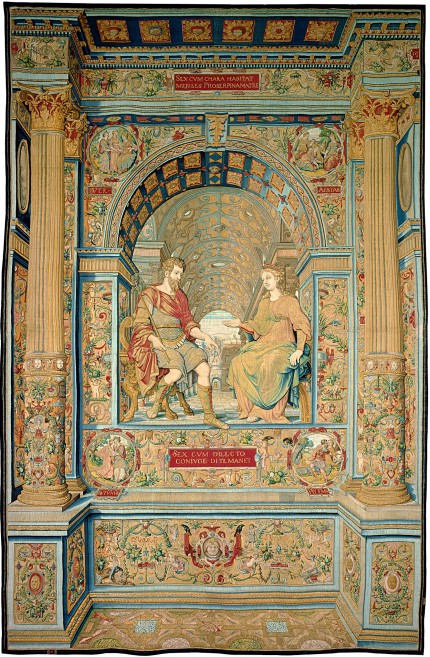
For more details about the tapestries and related artwork on display, read the exhibition booklet (pdf). Here’s an introductory video from the museum about the show. Keep your eye open for an amazing close-up view of gold metal threads around the 1:40 mark. Click the CC button for English subtitles.
[youtube=https://youtu.be/7RSHEseDr9o&w=430]